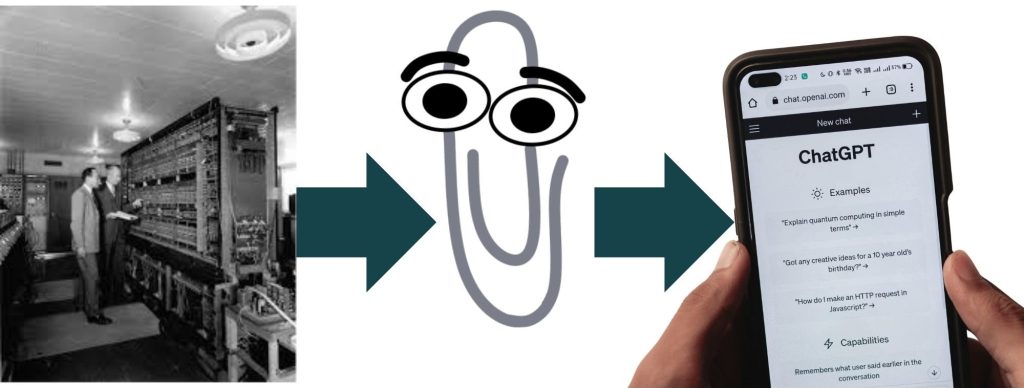1.Trace the History and Evolution of Artificial Intelligence in Communication
Congratulations! You’ve bravely ventured into the futuristic-sounding yet surprisingly accessible realm of Artificial Intelligence—AI, for short. Before your imagination bolts toward visions of robots serving coffee, flying cars, and computers that argue about the meaning of life, let’s pump the brakes a bit. Yes, AI is transforming how businesses communicate, but before you start asking your office printer for existential advice (spoiler: it will probably still jam), let’s dive into what AI is, where it came from, and why it’s suddenly the superstar of modern business communications.

First Things First: What Exactly Is AI?
Let’s start at square one: Artificial Intelligence is basically your computer pretending to think like a human. It’s software or machines capable of tasks that usually require human brains—things like understanding language, recognizing faces, or deciding if your late-night Amazon shopping spree looks suspicious. (Hint: It probably is.) Simply put, AI gives technology a tiny slice of human-like intuition, without the actual caffeine addiction or emotional breakdowns. Convenient!
In the Beginning, There Was a Dream (And Very Large Computers)
The story of AI kicks off back in the 1950s. Back then, computers filled entire rooms, made alarming buzzing noises, and were about as user-friendly as trying to pet a porcupine. A handful of optimistic scientists—people smarter than most of us combined—began wondering, “Hey, what if these machines could actually think?”
In 1956, a scientist named John McCarthy coined the term “Artificial Intelligence” at a conference in Dartmouth. McCarthy and his pals weren’t shy about their ambitions, confidently predicting that in just a few years, we’d all have personal robots cooking dinner and mowing lawns. Spoiler alert: It didn’t quite happen that way—unless you count robot vacuums endlessly bumping into walls as “intelligence.”
AI’s Awkward Teenage Years: Hype, Hope, and Disappointment
From the 1950s through the 1980s, AI bounced around in popularity like hairstyles and fashion trends. Early AI efforts focused on tasks that sound relatively simple—like teaching computers how to play chess or do basic math problems—but turned out to be trickier than teaching a toddler algebra. Researchers quickly discovered that “human-like thinking” was harder than it looked, leading to what’s affectionately known as the “AI Winter”—a fancy term for the times when everyone gave up on AI like a New Year’s resolution in February.
Then, computers began shrinking and speeding up, moving from room-sized monsters to desktop-friendly machines. AI researchers started experimenting with something called “machine learning,” a method where computers learn from data instead of just following rigid instructions. Like your new intern finally figuring out how the office coffee machine works (seriously, who designed these things?), machine learning algorithms learned from their mistakes—slowly getting smarter and smarter.
The 21st Century: AI Steps Into the Spotlight
Fast-forward to the 2000s, and suddenly everyone had more data than they knew what to do with, thanks to something called the internet—you may have heard of it. With the explosion of online data, computers finally had the training grounds they needed to actually get smart. The more data fed into these clever machines, the better they became at tasks like recognizing your face in your iPhone or predicting that you’re shopping online at 2 AM (again).
Then came the revolution in natural language processing, or NLP. Now, instead of just crunching numbers, computers could understand words, sentences, and even your terrible grammar. This led to sophisticated chatbots and AI assistants capable of holding semi-coherent conversations without sounding like robots from a 1950s sci-fi movie. You know, that delightful assistant named Siri or Alexa who occasionally misunderstands you in hilarious ways? That’s NLP—and a little dash of comedic timing, apparently.
AI and Communication: From “Clippy” to ChatGPT
Remember “Clippy”? Of course, you do—everyone’s favorite (and simultaneously most despised) cartoon paperclip from Microsoft Office who interrupted your writing with unhelpful suggestions like, “It looks like you’re writing a letter. Need help?” Clippy was an early attempt at computer-assisted communication—well-intentioned but as irritating as sand in your shoes.
Fast forward to today, and you’ve got sophisticated tools like Grammarly, which gently suggests that maybe—just maybe—you shouldn’t start every business email with “Hey, dude!” Or ChatGPT, which can draft emails, summarize documents, or even help brainstorm catchy taglines—without a paperclip’s smug grin.
AI’s Impact on Modern Business Communications
Today’s AI tools are like the Swiss Army knives of business communication. They proofread documents, summarize lengthy meetings, and generate drafts of anything from emails to marketing copy. Unlike Clippy, modern AI assistants usually won’t annoyingly pop up every five minutes—thank goodness. Instead, they wait patiently in the background, ready to spring into action and save your writing from grammatical doom or creative dry spells.
Companies use AI to analyze communication data, quickly identify customer sentiment, and even automatically translate business documents instantly, making global teamwork smoother than butter on toast. Sales teams deploy AI to personalize messages, marketing departments use it to craft engaging copy, and HR managers leverage AI tools to keep communications professional and inclusive.
So, What’s Next for AI in Communication?
The future of AI-powered communication looks brighter than a smartphone screen at midnight. We’re talking virtual assistants that actually understand context, translation tools so accurate they make Star Trek’s Universal Translator jealous, and predictive systems that anticipate your communication needs before you even realize them yourself. Spooky? Maybe. Incredibly useful? Definitely.
We might not yet have robots serving coffee and arguing philosophy with you (give it time), but AI’s impact on business communication is already enormous—and rapidly evolving. Understanding this history is more than just trivia—it’s your foundation for mastering modern business communication.
So, grab your digital assistant, wave goodbye to Clippy (again), and let’s dive deeper into the brave new world of AI-powered business communications. The robots aren’t taking your job—they’re just making it a lot more interesting.
Ready to discover which AI tools can turn your communication skills from good to spectacular? Let’s keep going!
